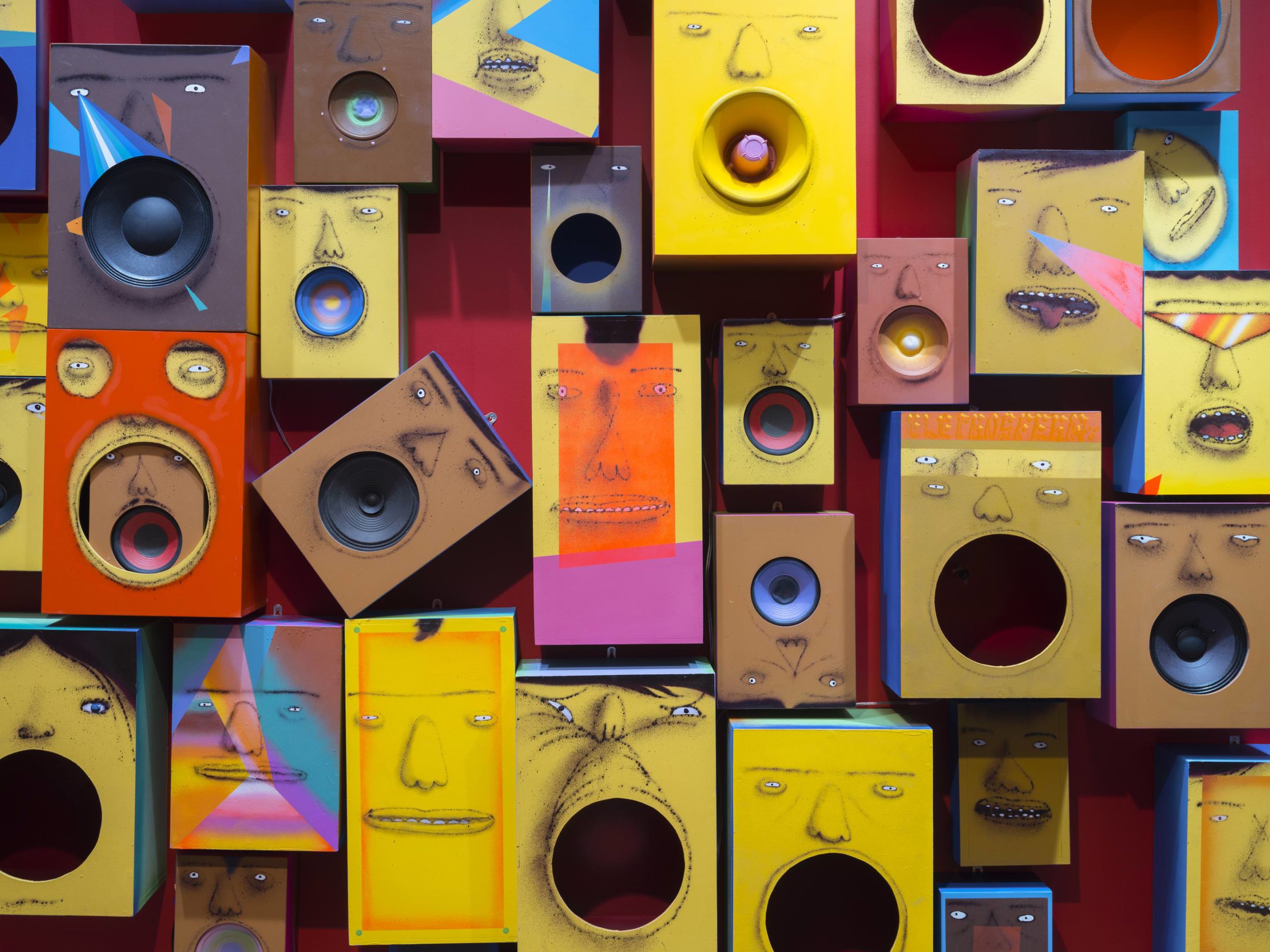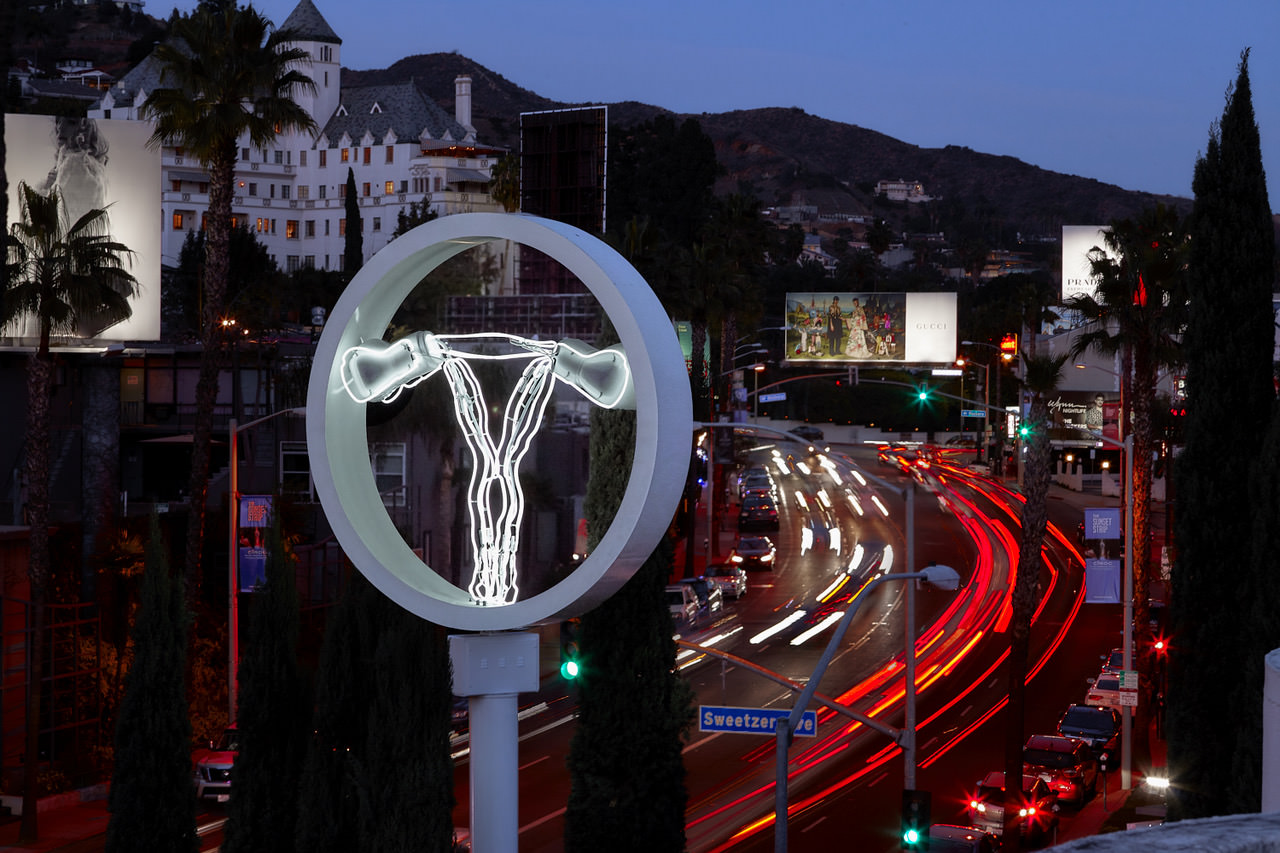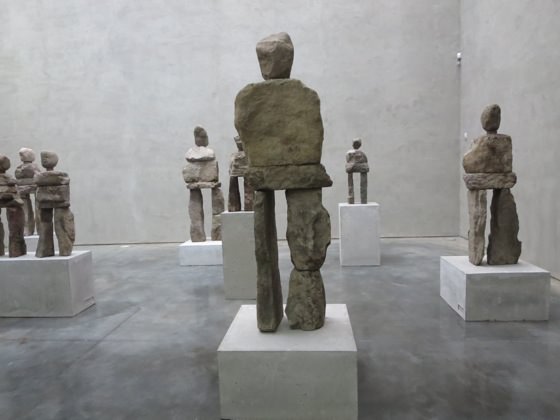Monika Sosnowska’s latest exhibition, currently on view at Hauser & Wirth’s Chelsea location, features a single, architectural structure of colossal size. Executed in the International Style, the large-scale sculpture Tower measures 110 feet in length and takes up the entirety of the exhibition space.
Upon first entering the gallery, viewers are met by layers of an intertwining steel framework, reminiscent of modernist skyscraper infrastructure. Viewers are invited to walk around the behemoth structure to better observe the variations in configuration, and experience how those variations effect their perception of the work in its physical environment. The sheer magnitude of this sculpture took us aback when we first entered the gallery, and the fact that the structure was laying horizontally along the floor rather than standing vertically further twisted our preconceived notions of a traditional tower. Being able to walk around it allowed us to see up-close the amount of work it takes to construct such a large-scale and dense project.
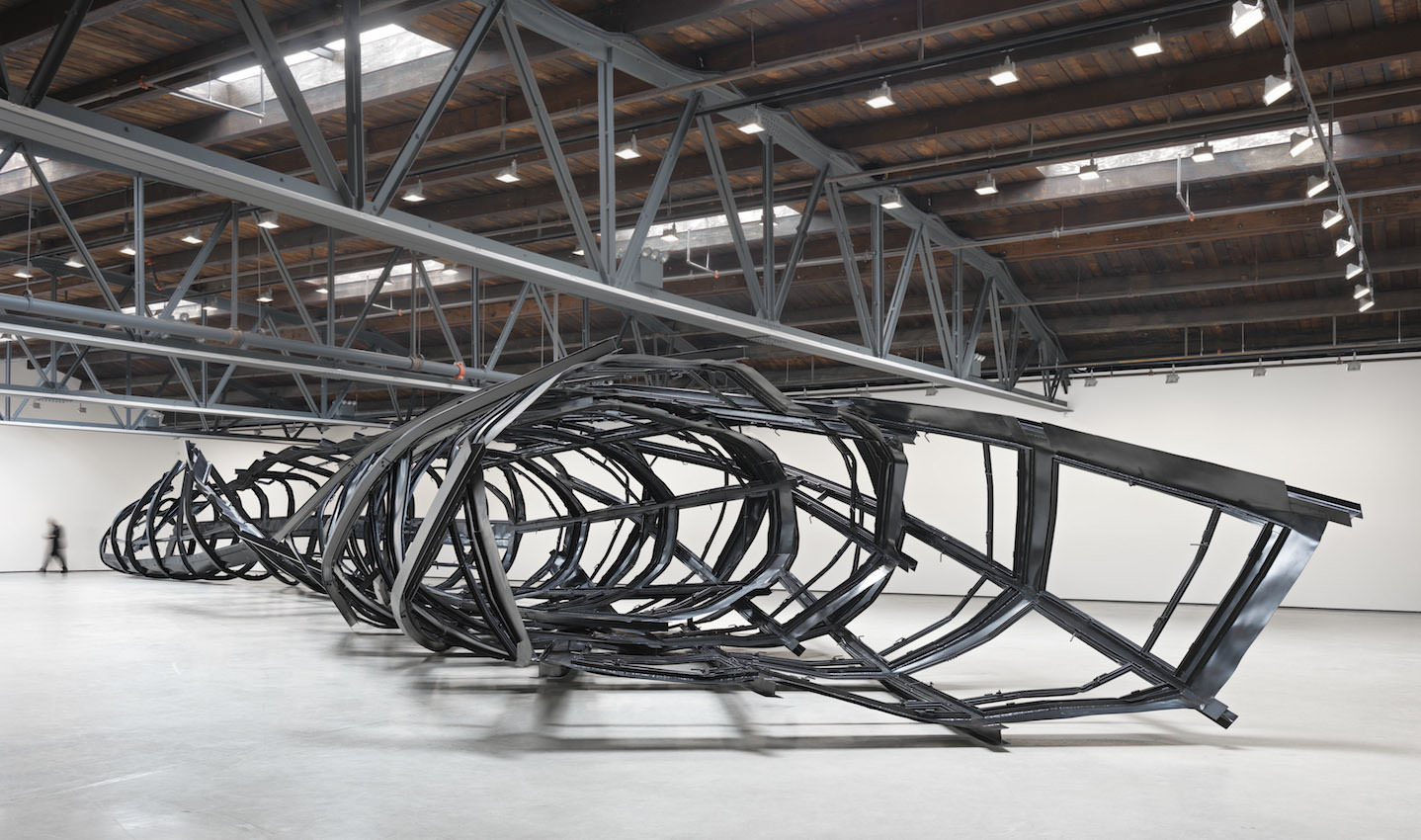
Tower
As with the rest of Sosnowska’s sculptural work, the process of creating Tower began with a series of drawings and small models based on preexisting structures. Using a 1:1 scale, she then reproduces her model with a team of engineers, fabricators, and technicians. The framework of Tower was assembled as a whole and later was cut into over fifty parts for transportation.
Known for her large-scale and site-specific sculptures, Sosnowska combines architectural styles with sculptural aesthetics to create works that explore human relationships with societal structures. She archives the conditions of daily life in her native Warsaw through recording design details that reveal the traditions and political and social upheaval of Poland and its Communist past.
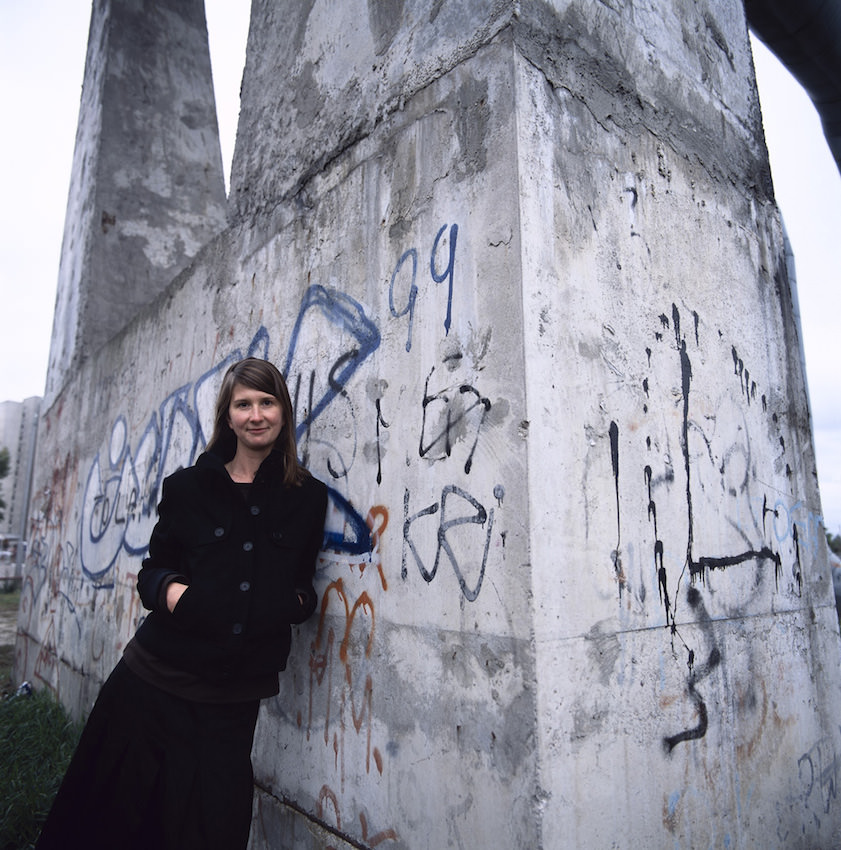
2014
The artist seeks to incorporate a cultural and historical memory in her works through the inclusion of her collection of over a decade’s worth of visual documentation of workshops, abandoned buildings, demolition sites, and apartment blocks. Her oeuvre explores the boundaries between “where architectural space begins to take on the characteristics of mental space.”
Sosnowska’s sculptures are rooted in multiple styles of modern architecture: Polish constructivism of the 1930s, the minimalistic tendencies of international art from the 1960s and 1970s, and Socialist architecture from Eastern Europe. For this particular installation, Sosnowska was specifically inspired by Ludwig Mies van der Rohe, a 20th-century Ur-Modernist, specifically his Lake Shore Drive Apartment buildings in Chicago. The skyscrapers completed in 1951 exemplify the radicalization of Bauhaus ideology, while the transparency of the International Style implies a societal openness.
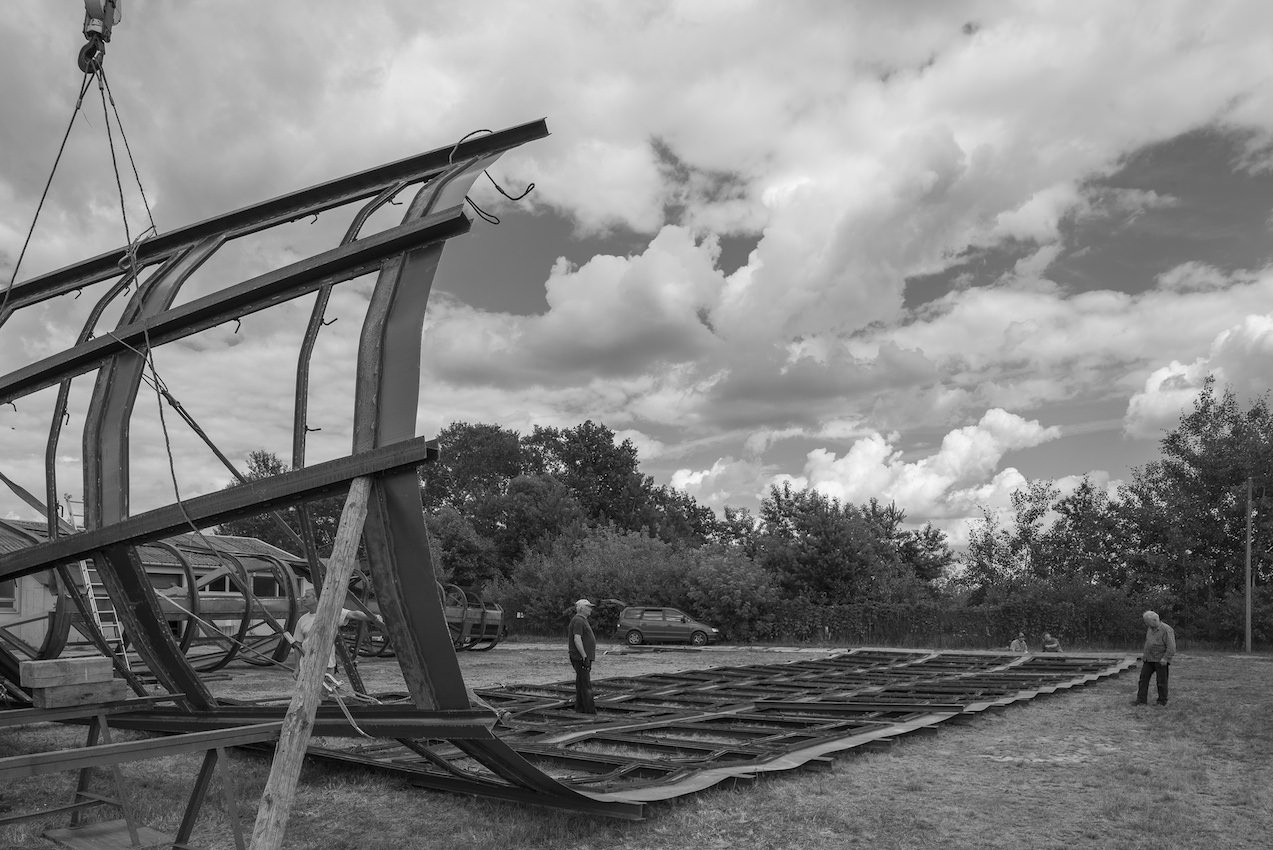
Steel, paint
The clarity of Ludwig Mies van der Rohe’s design and the metaphorical societal prosperity that it evoked stands in contrast to the ways the International Style influenced the new social order of the Soviet rule in Poland. Sosnowska takes the clean, geometric steel structure beneath the glass curtain wall and reconfigures it into a more organic form. No longer resembling rational infrastructure, Tower undulates across the gallery floor completely abstracted from the intended purpose of steel framework.
Tower is Sosnowska’s latest undertaking in her exploration of the curtain wall as an architectural motif. In another recent project, Saosnowska reconstructed Walter Gropius’ glass façade design for the Bauhaus School in Dessau, Germany.
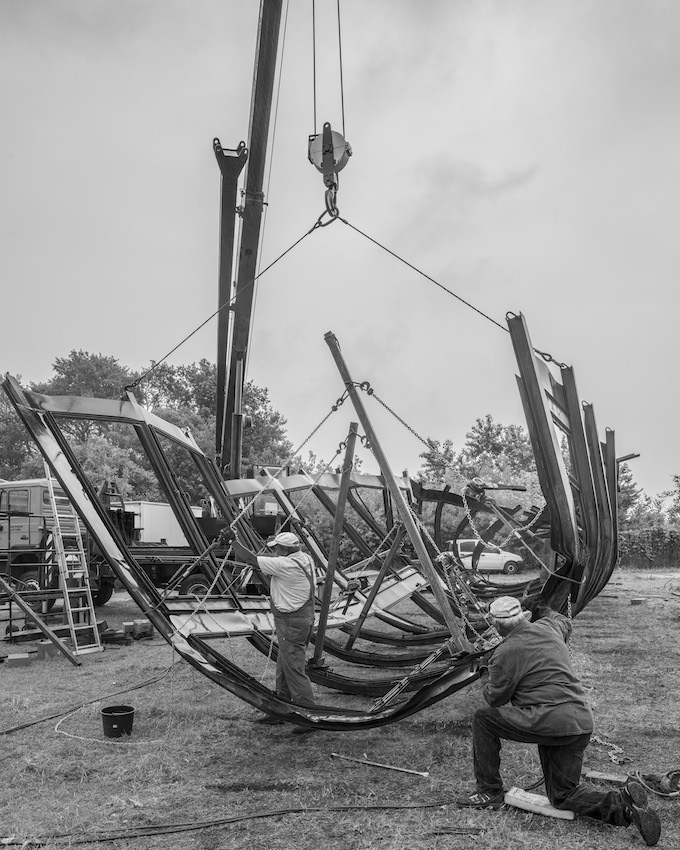
332.7 x 3223.3 x 668 cm / 131 x 1269 x 263 in
“Tower” is on view through the October 25.




